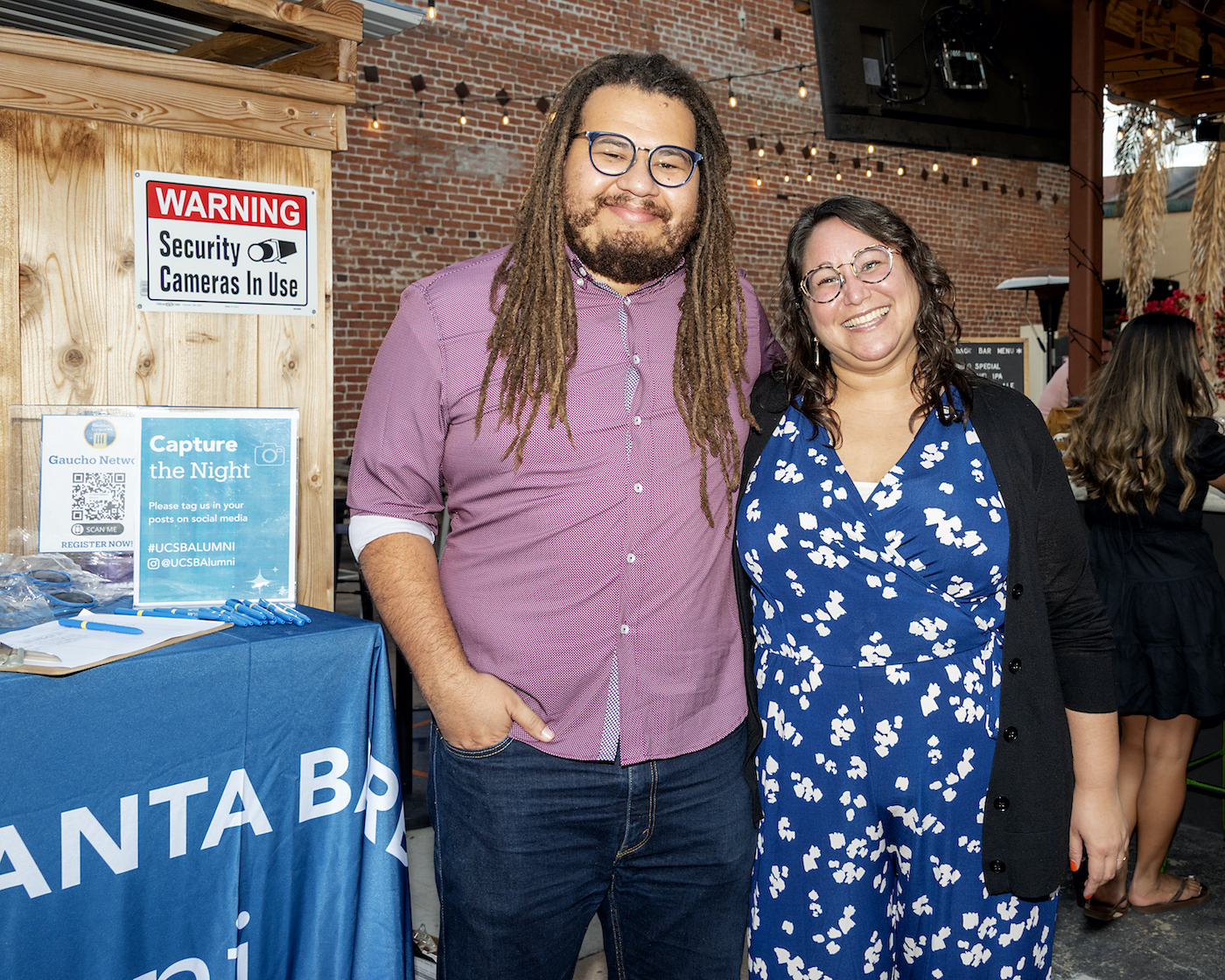Profs at the Pub

UCSB’s Computational Mate Choice Lab Head Dan Conroy-Beam PhD presented his research on mating choices and their success rate on Wednesday, October 19, at M. Special Brewing Company on State Street. The sold-out event was the official in-person restart to the monthly UCSB Alumni Department’s Profs at the Pub series, and was the perfect topic of our times – what choices do we make in selecting a partner, would they also select us, and would the coupled-ups still select each other if other potentials were available?
Conroy-Beam and his grad students are coming up with the empirical pertinent data.
He began the presentation defending his research “and your tax dollars for me to do it at UCSB,” by pointing out quality partnerships lead to better physical, mental, and financial health. Where one lives, works, and finds support systems is based in mating choices. Biological evolution incorporates the psychologies of selecting mates to reproduce and continue gene pools. Mating elements are in our songs, plays, films, and affect politics and wars. Budgeting one’s resources determines the percentage of mate selection available. He further postulates, “The largest percentage of internet usage is on mating/dating websites and porn.”
Key points from his presentation:
Using computer models, the Computational Mate Choice Lab simulates dating markets populated with avatars with the attributes and preferences of real-life couples. To get the data, they use national sampling pools’ responses to online questionnaires. The data is partner trait preferences, the traits the person filling out the questionnaire has, and how many of those traits are the same traits they are looking for in a partner.
Each person’s data gets one avatar and all the bots in the sampling pool are placed in a mating market. Then they test the bots with algorithms to find out what percentage of the bots select each other again, or prefer another bot. One method of analyzing the data used is Euclidean mate value estimation. To understand how it works, he gave the example: if everyone attending the event tonight were identified by extrovert (outgoing) or introvert (shy, smiling, and not smiling), and were seated in a section of the room by that identity, would each person be the closest distance to their partner or someone else?
Caveats of his research that may surprise you:
– people are rational in what they want, and it usually does not change over time
– if more people find you desirable, your list of what you want increases also
– the results of his data show that 40% will choose each other again, and 60% will select someone else to partner with
– the 40% have overall better relationships and are happier
– his lab has not shared the results with the people in the study
– his research findings generally apply across sexual preferences
– political preference is not as hard a rule as people think it is
Future goals of his research include testing single people who want a relationship – in order to help people have happier relationships. His grad students are studying variations of the theme, such as polyamorous relationships, romantic jealousy, romantic love, and evolution models.
I couldn’t help but wonder what Helen Fisher PhD, a research professor and member of the Center for Human Evolution Studies in the Department of Anthropology at Rutgers University, who hallmarked research on why we love with MRI brain scans in 2014, would say. Could she add her research to the data?
Attendees included Ceylan Ozkan RN MSN, recently appointed Director of Quality at SB Neighborhood Clinics and Conroy-Beam’s partner; fellow professors; students; and locals. Full reports of his findings are on his website.
Conroy-Beam has a B.S. psychology and Ph.D. in Individual Differences and Evolutionary Psychology at the University of Texas at Austin. He joined the UCSB faculty in 2016 and is the 2022-2023 recipient of the Harold J Plous Award, given to Assistant Professors who have demonstrated outstanding performance or promise of performance as measured by intellectual and creative contributions to the college community.







